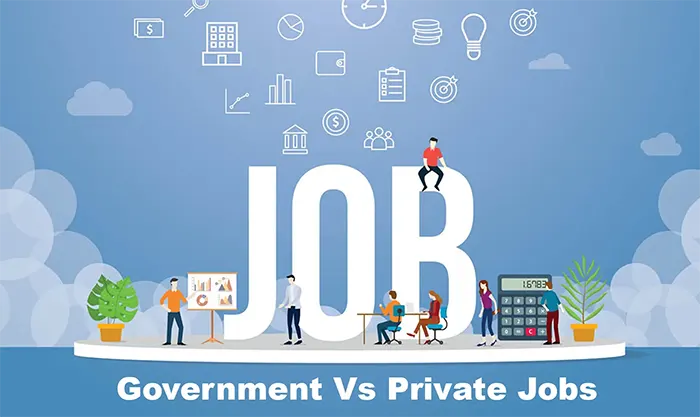IBM is cutting around 8000 jobs, likely because of AI, major losses in the HR department
Hey, career aspirants? In a world increasingly driven by innovation, even the giants must transform or fall. IBM, once synonymous with technological advancement and corporate sophistication, is now sending ripples across the employment landscape with a bold and chilling decision — to cut approximately 8,000 jobs, largely due to the growing role of artificial intelligence. But behind the headlines lies a deeper, more human story — one of corporate evolution, technological disruption, economic pragmatism, and the undeniable anxiety felt by thousands whose roles may be replaced not by people but by code. Let’s peek into IBM’s story!
The Inevitable Storm: Why IBM Made This Decision
The decision to automate certain roles is not unique to IBM. In 2025, the tech industry has seen over 61,000 job cuts across more than 130 companies, including giants like Microsoft, Google, Amazon, and CrowdStrike. These layoffs are driven by factors such as slowing revenue growth post-pandemic, global economic uncertainty, and the rapid deployment of AI in business processes.
What’s changed recently, however, is the confidence with which AI can now perform certain tasks. Arvind Krishna, IBM’s CEO, recently stated that roughly 30% of non-customer-facing roles, particularly in HR, could be replaced by AI and automation within the next five years, with around 26,000 such roles, that translates to nearly 7,800 people potentially being phased out of the company. The motivation is simple: efficiency. AI doesn't ask for vacations. It doesn't fall sick. It doesn't unionize. For a corporation operating under intense pressure to grow margins, the logic of automation is compelling. But where does that leave the people?
Understanding the Impact on HR Roles
The HR department is among the most affected by this shift. Tasks such as providing employment verification letters or moving employees between departments are considered mundane and ripe for automation. However, more complex HR duties, like assessing workforce productivity and composition, are less likely to be replaced by AI in the near future. Nickle LaMoreaux, IBM’s Chief Human Resources Officer, emphasized that AI will not completely replace jobs but will automate certain tasks, allowing employees to focus on higher-value work. She noted that while some roles might go away, employees could transition to different tasks, effectively moving up the value chain.
A clearer view:
Perhaps the most jarring part of IBM’s decision is its impact on the Human Resources department — the very department meant to manage and support the people within an organization. HR departments have always walked a fine line between administrative efficiency and emotional intelligence.
On one side, they handle routine tasks — payroll processing, employee transfers, leave approvals, and documentation. On the other hand, they manage human complexity — conflicts, growth, morale, diversity, and inclusion. It is the former that IBM’s AI strategy now targets. Verification letters? AI can do that. Approvals? Just a few lines of code. Routine scheduling? Easily automated. These tasks — once a daily fare for entry-level HR professionals — are now seen as expendable. IBM has made it clear that AI will not replace the entire HR function, but it will redefine it. The more emotionally nuanced tasks, such as performance discussions, strategic hiring, and conflict mediation, will still require human oversight. Yet, for thousands, this subtlety is cold comfort.
A Layoff or an Evolution?
Honestly, what’s happening at IBM isn’t just a layoff. It’s a metamorphosis. The decision to automate certain jobs stems not from cruelty but from a calculated understanding of economic reality and technological capacity. But that doesn’t make it painless. IBM insists that employees affected by automation may find opportunities in new roles, particularly in tech-focused divisions like AI development and machine learning. Theoretically, displaced HR professionals could be reskilled and redeployed. But in practice, upskilling takes time, access, support, and — most critically — willingness. Not every HR professional wants to become a data scientist. Not everyone can. IBM says nearly 50% of its workforce is already trained in AI-related skills, with more to follow. But the timeline is tight. The roles are evolving faster than the average employee can adapt. The question remains — will this be a graceful transition or a generational crisis?
The Domino Effect: IBM Isn’t Alone
IBM’s move is far from isolated. Since the start of 2025, tech giants around the world — from Google to Microsoft to Amazon — have collectively laid off over 61,000 employees. The reasons vary, but a common thread runs through all of them: AI is no longer a luxury. It’s a necessity. The pandemic taught companies to do more with less. Remote work forced them to digitize workflows. Supply chain crises pushed for automation. And now, AI is accelerating it all. This wave of layoffs isn’t just cost-cutting — it’s a shift in strategy.
Businesses are preparing for an AI-first world and, in the process, recalibrating their human capital needs. For IBM, this means less dependency on support roles and more on technical talent. In fact, as it lets go of thousands, it is also actively hiring for AI-specific roles — machine learning engineers, prompt engineers, and generative AI developers. It's not that jobs are disappearing; they’re simply shifting into new territory — one that not everyone is equipped to enter.
The Psychological Earthquake
Numbers and strategy aside, what's unfolding at IBM is deeply personal for those involved. The psychological toll of being told your job is "replaceable" — not by someone more skilled, but by a machine — is hard to overstate. Employees in these affected departments report a mix of confusion, fear, and frustration. For years, they've given their loyalty to a company that now views some of their roles as obsolete. And while leadership assures them of retraining the emotional shock is real. There's also a sense of betrayal.
HR professionals, in particular, are trained to empathize, protect organizational integrity, and ensure fair practices. Now, they're the ones being quietly pushed aside. The irony is bitter — a department built on human value is being restructured by artificial intelligence.
What Could IBM Have Done Differently?
To IBM’s credit, it isn’t hiding its strategy. CEO Arvind Krishna has openly acknowledged the changes. CHRO Nickle LaMoreaux has reassured stakeholders that very few jobs will be completely replaced. Instead, tasks within jobs will be automated, allowing employees to focus on higher-value work.
But transparency doesn’t always equate to compassion. Could IBM have communicated more empathetically? Could it have involved employees earlier in the transition process? Could it have designed AI to assist HR teams rather than replace them?
Critics argue that a more people-centric approach involving job sharing, part-time AI assistants, or transitional mentorship roles could have softened the blow. Others say this is the cost of progress. Whichever side you lean on, the truth is this: once the door to automation is open, it rarely shuts.
Conclusion
Concluding it all, IBM’s AI-powered restructuring is a defining moment in the evolving relationship between humans and machines. It is both a warning and a promise — a glimpse into a future where efficiency reigns, but not without cost.
For those inside IBM’s walls, this is more than a corporate move. It’s a personal reckoning. For the world watching, it’s a signal flare: the age of AI isn’t coming — it’s here.
If you found this update useful, don’t forget to follow ClickNaukri!
Follow ClickNaukri for more such updates.
Thank you for reading 🙂
------------------------------------------------------------------------------------------------------------------
Read more blog click here
Follow us on Instagram
If you want to build your website at an affordable price, then click here












